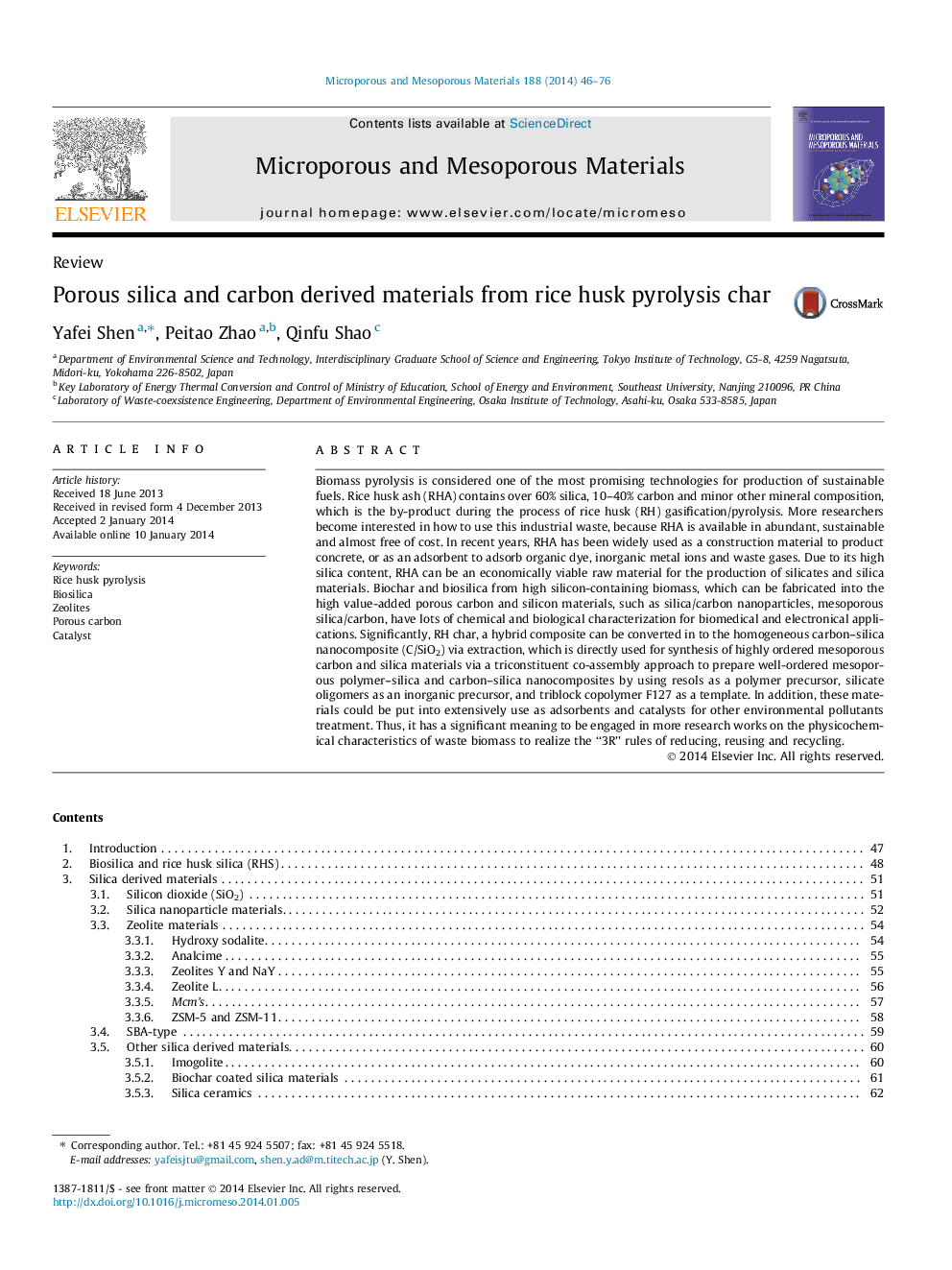| کد مقاله | کد نشریه | سال انتشار | مقاله انگلیسی | نسخه تمام متن |
|---|---|---|---|---|
| 73182 | 49050 | 2014 | 31 صفحه PDF | دانلود رایگان |
• Silica derived materials can be economically fabricated from rice husk ash.
• Rice husk silica has lots of chemical and biological characterization.
• An alternative nanosized silicon produced from rice husk possesses a high performance for nano-electronics.
• Highly ordered mesoporous carbon and silica materials can be synthesized from a hybrid composite in rice husk char.
• Silica and carbon materials derived from rice husk can widely used as adsorbents and catalysts.
Biomass pyrolysis is considered one of the most promising technologies for production of sustainable fuels. Rice husk ash (RHA) contains over 60% silica, 10–40% carbon and minor other mineral composition, which is the by-product during the process of rice husk (RH) gasification/pyrolysis. More researchers become interested in how to use this industrial waste, because RHA is available in abundant, sustainable and almost free of cost. In recent years, RHA has been widely used as a construction material to product concrete, or as an adsorbent to adsorb organic dye, inorganic metal ions and waste gases. Due to its high silica content, RHA can be an economically viable raw material for the production of silicates and silica materials. Biochar and biosilica from high silicon-containing biomass, which can be fabricated into the high value-added porous carbon and silicon materials, such as silica/carbon nanoparticles, mesoporous silica/carbon, have lots of chemical and biological characterization for biomedical and electronical applications. Significantly, RH char, a hybrid composite can be converted in to the homogeneous carbon–silica nanocomposite (C/SiO2) via extraction, which is directly used for synthesis of highly ordered mesoporous carbon and silica materials via a triconstituent co-assembly approach to prepare well-ordered mesoporous polymer–silica and carbon–silica nanocomposites by using resols as a polymer precursor, silicate oligomers as an inorganic precursor, and triblock copolymer F127 as a template. In addition, these materials could be put into extensively use as adsorbents and catalysts for other environmental pollutants treatment. Thus, it has a significant meaning to be engaged in more research works on the physicochemical characteristics of waste biomass to realize the “3R” rules of reducing, reusing and recycling.
Figure optionsDownload as PowerPoint slide
Journal: Microporous and Mesoporous Materials - Volume 188, April 2014, Pages 46–76
